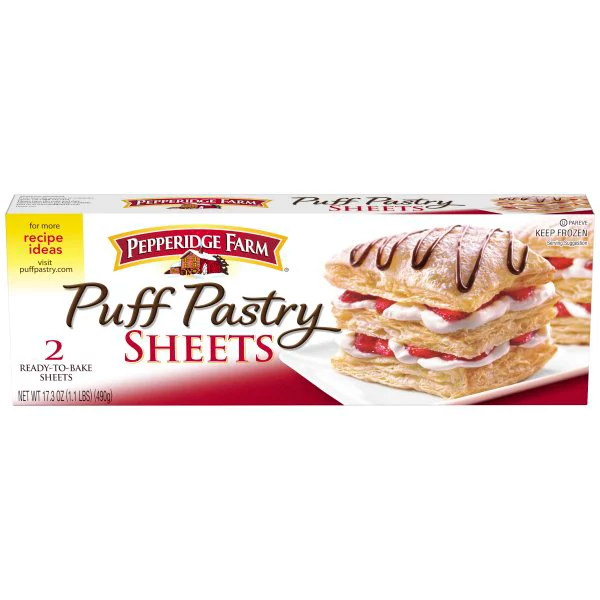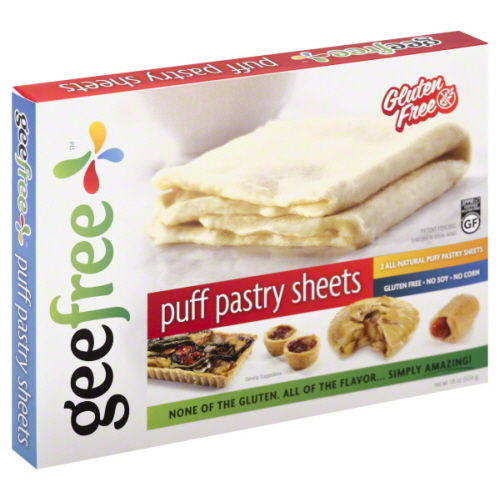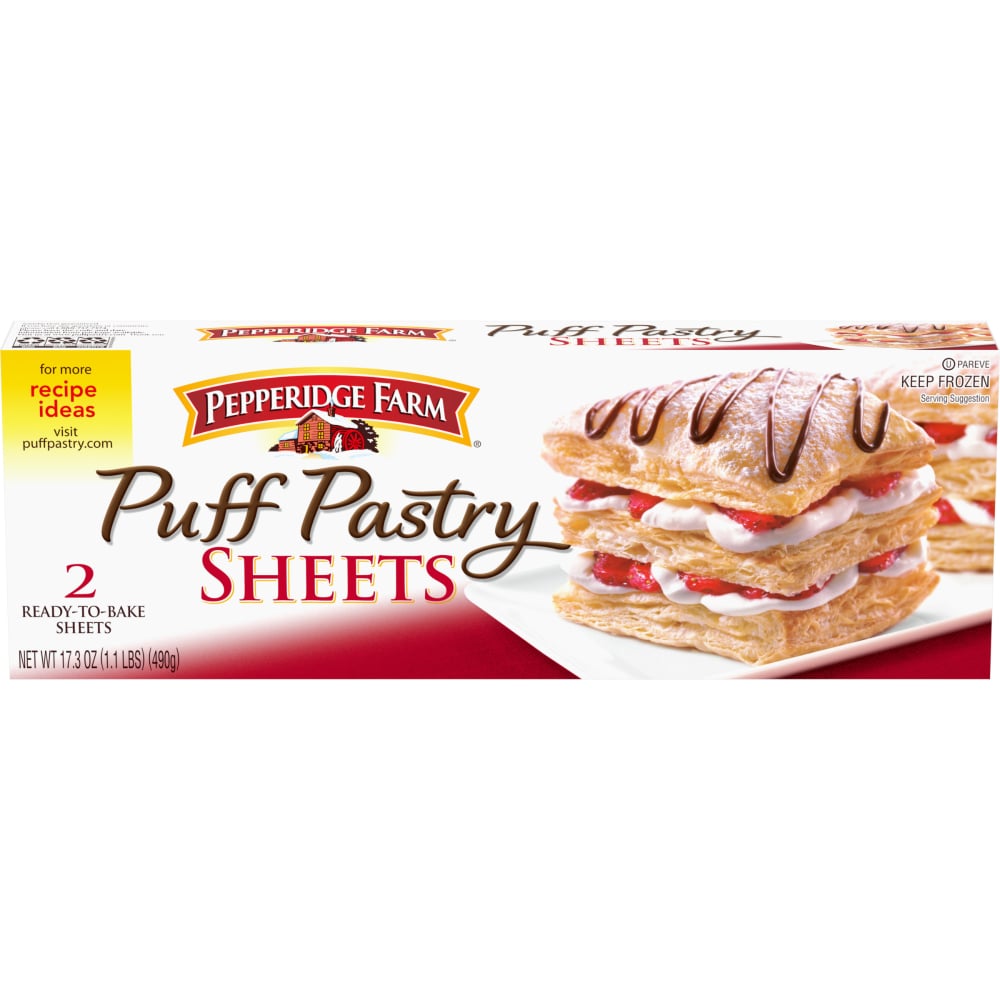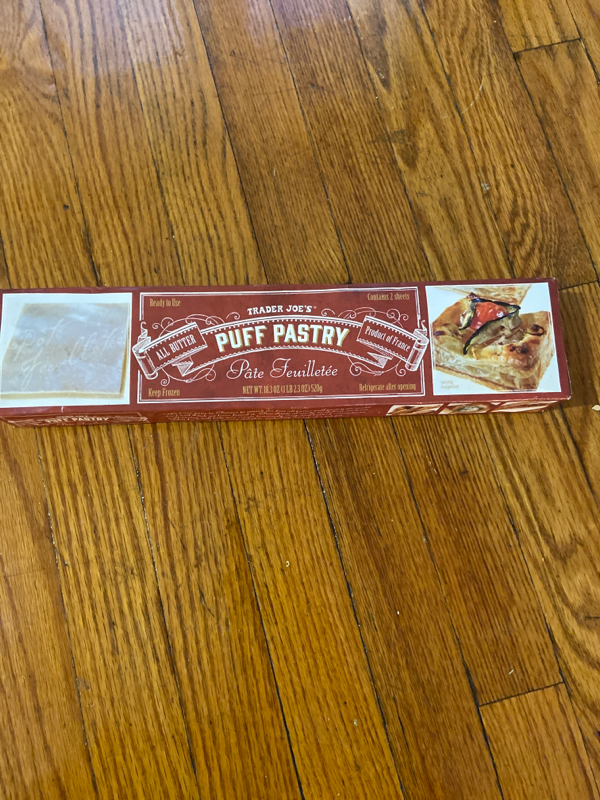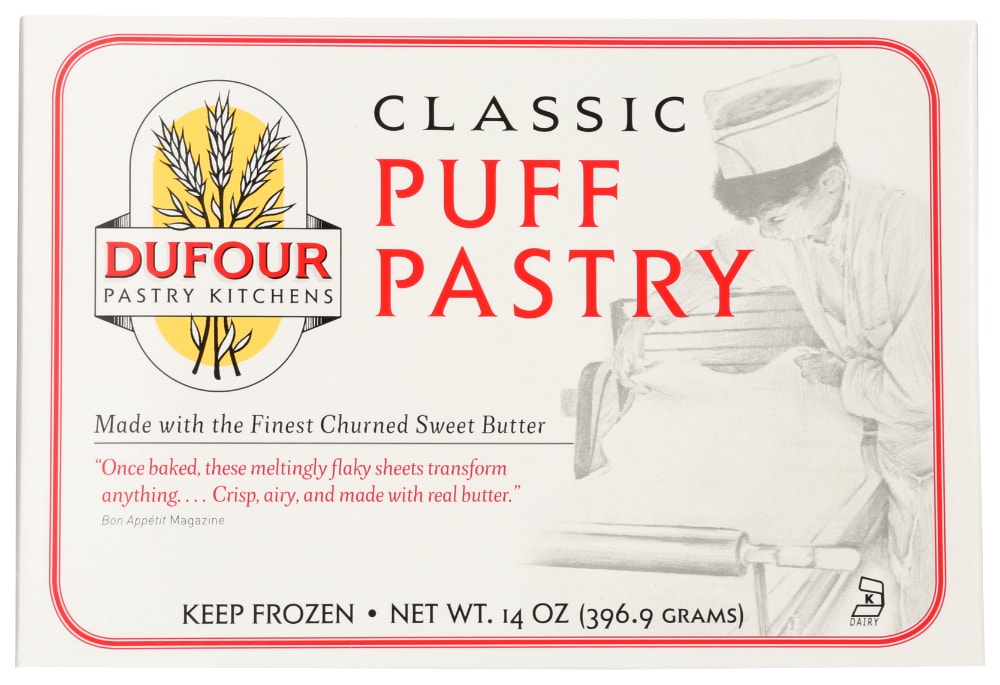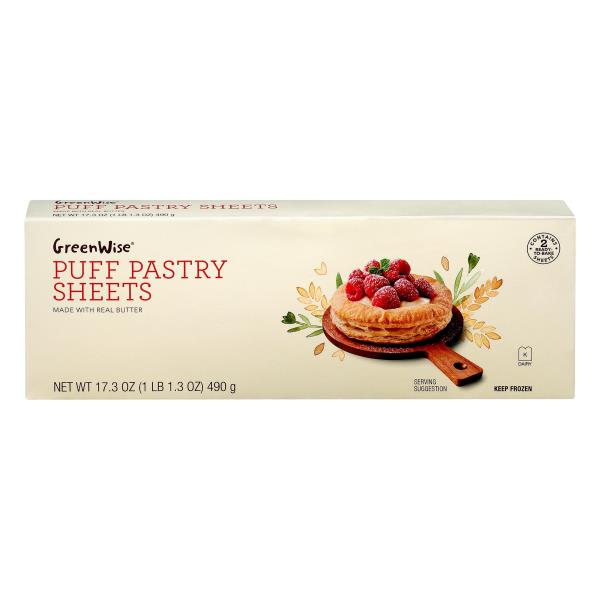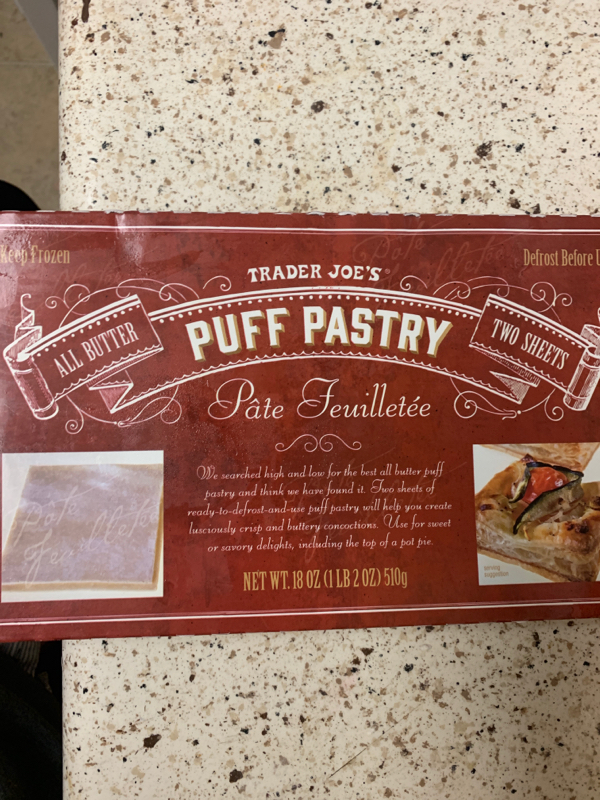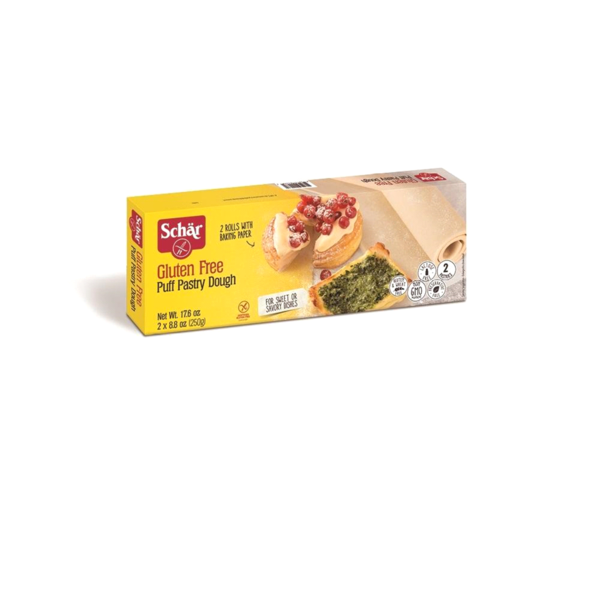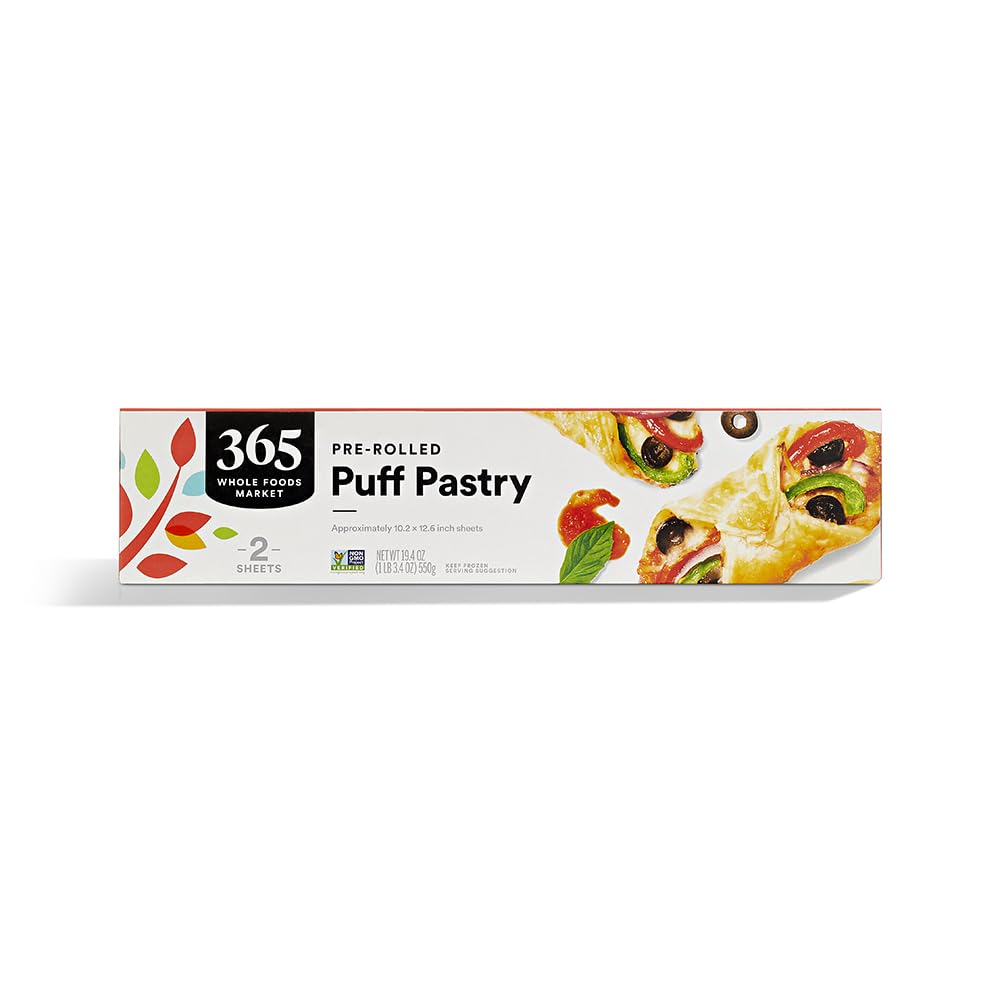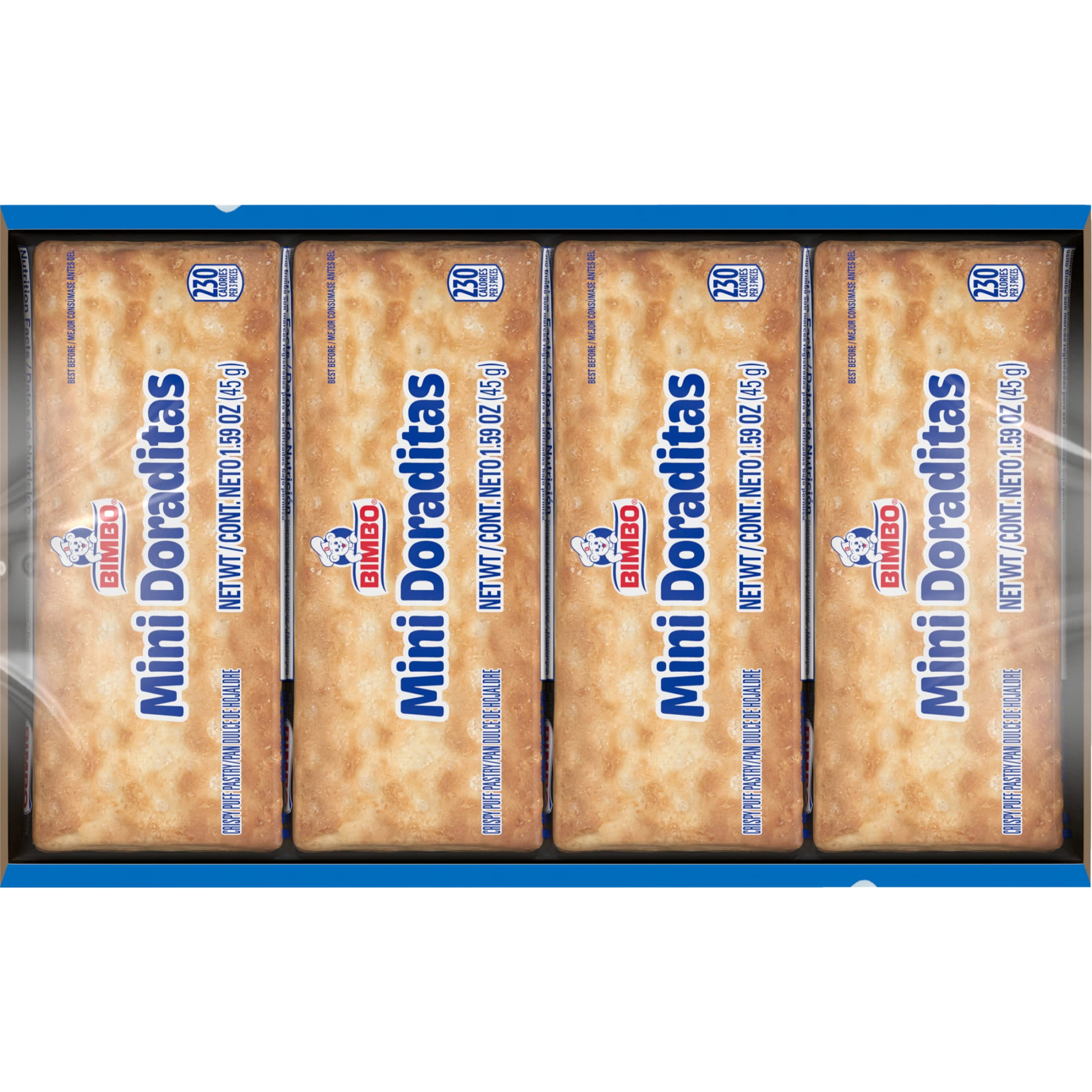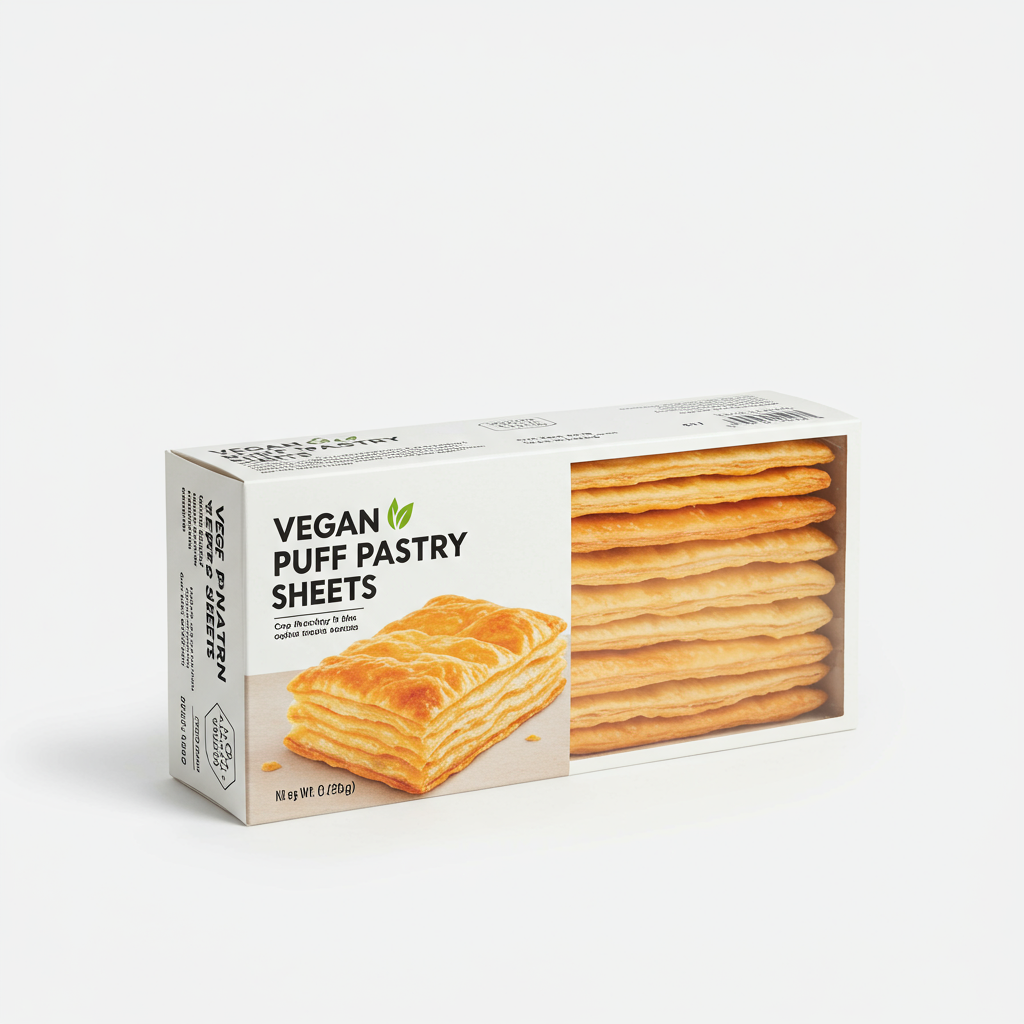DESSERTS
APPETIZERS
BREADS
Puff Pastry Sheets
Puff pastry sheets are a versatile and convenient type of dough that can be used to make a wide variety of sweet and savory dishes. Often found in the frozen section of grocery stores, these pre-rolled thin layers of dough are made from flour, butter, and water, creating a light and flaky texture when baked.
Puff pastry can be utilized in the creation of appetizers, main courses, or desserts. Home cooks often use puff pastry sheets for producing dishes such as turnovers, tarts, pot pies, and pinwheels. The dough's simplicity allows it to be easily adaptable, making it a popular choice for creating stunning and delicious recipes with minimal effort.
55%
CARBS
34%
FAT
10%
PROTEIN
116 Puff Pastry Sheets Products
Pepperidge Farm Puff Pastry Frozen Pastry Dough Sheets, 2-Count
GeeFree Puff Pastry Sheets
Pepperidge Farm® Puff Pastry Frozen Sheets Pastry Dough
Puff Pastry
Dufour Pastry Kitchens Classic Puff Pastry
GreenWise Puff Pastry Sheets
Puff Pastry
Schar Puff Pastry Dough, Gluten Free
365 By Whole Foods Market, Puff Pastry, 19.4 Ounce
Crispy Puff Pastry
Used In 103 Recipes
Smoky Ham and Double Cheese Slab Pie
3
Baked Spinach Artichoke Pockets
Vanilla Custard Puff Pastry Cake
3
Savory Bacon, Egg and Beef Pastry Pockets
Choco-Bliss Croissants
1
Simplified Morning Delight Chocolate Croissants
2
Savory Vegan Spinach & Cream Cheese Puffs
Cinnamon and Sugar Sprinkled Puff Pastry Delights
Puff Pastry Sheets Are Frequently Used With
Puff Pastry Sheets FAQ
Puff pastry sheets are simple, yet versatile ingredients that can elevate dishes from plain and ordinary to gourmet with their light and flaky texture. The magic of puff pastry is in its layers, created by a process known as lamination, which involves folding the dough numerous times to create thin, buttery layers. When baked, these layers separate and rise, creating a delicious, crispy texture that adds sophistication to any dish.
The main place where cooks tend to go wrong with puff pastry is in the handling process- the pastry should be kept as cold as possible prior to baking, too much handling or rolling can cause the butter to melt, leading to a final product that’s heavy and dense, rather than light and fluffy. It is suggested to thaw it properly and not rush the process. Once thawed, puff pastry can be cut, shaped, and filled in endless ways.
One way to get the most out of puff pastry sheets is to harness their versatility by experimenting with various fillings and toppings. Sweet fillings like fruit preserves or nutella, or savory fillings like cheese and vegetables, can easily be enveloped inside the dough which then puffs up in the oven, creating a delightful contrast of crispy pastry and soft, juicy fillings.
Cooking tip: when baking pie or tart shells, it's helpful to prick the pastry all over with a fork - a process known as 'docking' - before baking to let steam escape, preventing the pastry from puffing up too much and creating large air pockets.
Can puff pastry be microwaved?
Can I use puff pastry instead of pie crust?
How do you keep puff pastry from getting soggy?
Why is my puff pastry not puffing up?
Can you shape puff pastry?
How do I make my puff pastry crispy and flaky?
Do you need to grease the pan for puff pastry?
Can I refreeze puff pastry sheets?
Do I have to bake puff pastry right after I fill and shape it?
Can I use puff pastry for pizza crust?
Expiration & Storage Tips
When does puff pastry sheets expire?
Unopened puff pastry sheets usually have a shelf life of about 7 to 8 months in the freezer, when kept at or below 0°F. You may notice a 'Best By' date on the package, where food quality may degrade after this date, but it is still safe to consume if properly stored. Once thawed in the refrigerator, puff pastry should be used within 1-2 days. If you have opened the package but not used all of the puff pastry sheets, they can be wrapped tightly in plastic and stored in the refrigerator for 2-3 days, but using them as soon as possible is advisable.
How do you tell if puff pastry sheets is bad?
One tell-tale sign that your puff pastry has gone bad will be a change in smell. The pastry should generally have a light, buttery odor. If the puff pastry sheets have an off smell or they've developed an off-white, gray or greenish-blue hue, they are likely contaminated with mold and should be discarded. A hard or dry texture, instead of a soft and pliable one, is another indicator that the dough has lost its freshness.
Tips for storing puff pastry sheets to extend shelf life
• Always keep puff pastry sheets frozen until you're ready to use them. This preserves the delicate layers and helps achieve a flaky texture when baked.
• When ready to use, thaw the puff pastry in the refrigerator overnight rather than on the counter to reduce the risk of bacterial growth.
• If you only need a portion of the puff pastry sheet, cut off the desired amount and promptly return the unused portion back to the freezer to maintain its quality.
• Do not re-freeze thawed puff pastry as it can compromise the quality and safety of the dough.
• If you've opened the puff pastry package but didn't use all of it, tightly wrap the remainder in plastic wrap and store in the refrigerator.
EXPIRES WITHIN
3 - 5
MONTHS
Substitutes
Health Info
Macros
31g
CARBS
19g
FAT
6g
PROTEIN
Allowed on these diets
LOW FAT
HIGH CALCIUM
VEGETARIAN
Contains these allergens
MILK
WHEAT

